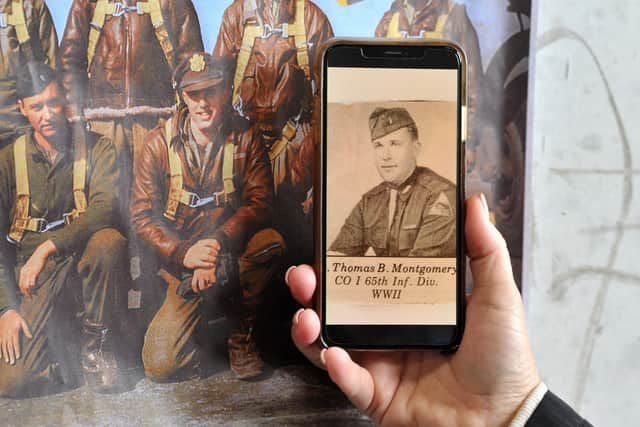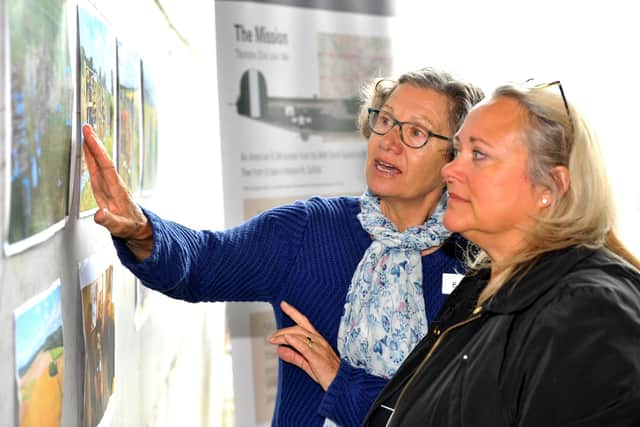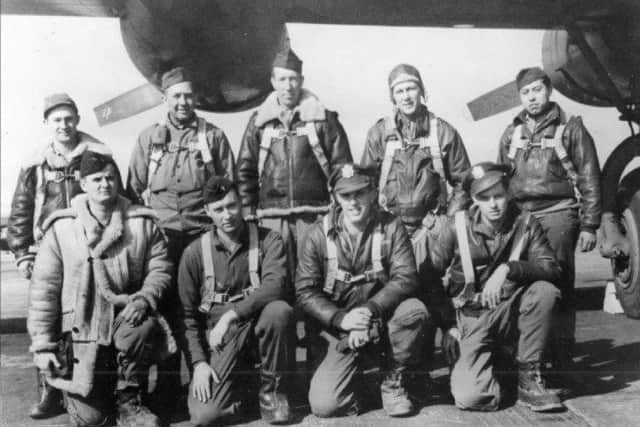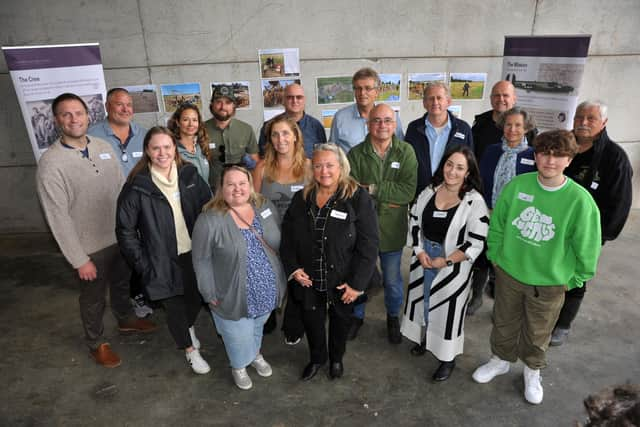The Arundel Bomber: Pilot Lieutenant William Montgomery's remains identified after recovery mission and family say it means the world
and live on Freeview channel 276
Family of Lieutenant William Montgomery, who was piloting a B-24H Liberator that was struck by anti-aircraft after a bombing raid on a German airfield in near Versailles, say it means the world to have his remains identified.
The Defense POW/MIA Accounting Agency (DPAA) announced on Monday that US Army Air Forces 1st Lt William B. Montgomery, 24, of Ford City, Pennsylvania, killed during World War Two, was accounted for on January 10, 2023.
Advertisement
Hide AdAdvertisement
Hide AdTo identify his remains, scientists from DPAA used anthropological analysis as well as material evidence. Additionally, scientists from the Armed Forces Medical Examiner System used mitochondrial DNA (mtDNA), analysis.


Tracey Montgomery Kirchoff, his great niece, who visited the site in Arundel with family in September, said: "My grandfather was Tom Montgomery. His brother was pilot William Montgomery. He died in 2010 at age 91. He would be thrilled that his brother’s remains have been found and identified. I wish he knew the complete story of his brother’s heroic flying on this mission but sadly the information was kept classified and out of the public domain until a few years ago."
Tracey, who lives in Seabrook Island, South Carolina, said she was very close with her grandparents and growing up, her grandfather told her his brother was killed during the Second World War and lost over the English Channel.
Advertisement
Hide AdAdvertisement
Hide AdIn the summer of 1944, William was assigned to the 844th Bombardment Squadron, 489th Bombardment Group (Heavy), Eighth Air Force. On June 22, 1944, he was piloting a B-24H Liberator from Halesworth in Suffolk on a tactical bombing mission. The aircraft sustained severe damage caused by anti-aircraft fire while attacking the target. The only operable controls were one rudder and elevator but William used his piloting skill to nurse the aircraft until it was over the English coast.


He ordered his crew to bail out and seven of them, navigator 2nd Lieutenant Herbert K. King, radio operator Sergeant Joseph A. Foley, bombardier 2nd Lieutenant D. M. Henderson, tail gunner Staff Sergeant Edwin J. Sumner, ball turret gunner Staff Sergeant Pearl Toothman and waist gunners Staff Sergeant Richard M. Rodriguez and Staff Sergeant Aaron D. Roper, all parachuted successfully and were able to return to duty.
William, co-pilot Flight Officer John J. Crowther and TSgt John Holoka went down with the plane. Fg Off Crowther was listed as Killed in Action and his remains were repatriated but William and TSgt John Holoka were listed as Missing in Action.
Farmer John Seller, who was about ten and living in the farm cottages at the time, saw the heavy bomber nose dive into the ground. The pasture land at Park Farm where the plane crashed was excavated in December 1974 and has been dug up several times since. During these excavations, various aircraft parts, the guns and larger surviving parts, including the engines, prop hubs and armoured seats, were recovered but their whereabouts is now unknown.
Advertisement
Hide AdAdvertisement
Hide AdThe DPAA first visited the site in June 2017, with the permission of the Seller family, which runs the farm, and Cold War veteran Mark Khan was brought in to help the team understand the history of aircraft wreck recovery and the licence process.


Further investigation took place in 2019 and in June 2021, work to recover any remains of the crew began, with Mark as co-project investigator on the veterans archaeological excavation over four weeks. The dig happened to coincide with the 77th anniversary of the plane crash, so the team started with a memorial service on Tuesday, June 22, 2021, including a flypast with three Spitfires to honour the missing airmen.
The DPAA explained: "Beginning in 1946, the American Graves Registration Command (AGRC), Army Quartermaster Corps, was the organisation tasked with recovering missing American personnel in the European Theater. In November 1947, AGRC investigators searched the area of the crash site but they did not discover the remains of any other crew members. Montgomery was declared non-recoverable May 10, 1950.
"Montgomery’s name is recorded on the Wall of the Missing at Cambridge American Cemetery, an American Battle Monuments Commission site in Cambridge, United Kingdom, along with others still missing from WWII. A rosette will be placed next to his name to indicate he has been accounted for. Montgomery will be buried at Arlington National Cemetery on a date yet to be determined."
Advertisement
Hide AdAdvertisement
Hide AdTracey, her husband Brian, two of her daughters, her son-in-law, a family friend and her niece and nephew had the opportunity to visit the farm in Arundel last September to view the crash site.


She said: "We were a group of eight! We had a preplanned Europe vacation set when the opportunity came up to take a detour one day and visit the Sellers’ farm. We took a train from London to Arundel and were greeted at the train station by James Seller and Mark Khan.
"We were honoured to meet quite a few of the British volunteers involved in the archeological dig, along with Mr Seller and his wife Helen. Such wonderful people. I was able to lay flowers and a flag by the memorial stone and pay respects at the site.
"Peter Hay literally gave me his shirt. It was his personal Team B24 t-shirt he wore at the dig. He brought me to tears sharing his story of the night he was on the dig site working alone, after the American team had left for the day. It was then that he found a boot with the foot still inside. Rather than leave the remains of the serviceman alone for the night, he camped out by himself on the field.
Advertisement
Hide AdAdvertisement
Hide Ad"What a selfless act of kindness and respect! It’s heartwarming to know that there are good people in the world. Peter is definitely one of the best! And all the Brits I met are a major reason that I believe this project was 100 per cent successful.
"On behalf of my grandfather, I cannot thank everyone enough for their dedication and generosity of time to see this through. And my family and I made a few British friends along the way. We celebrated our visitation that day with a delicious group dinner at The Swan Hotel in Arundel. It was an experience that I will never forget."
The DPAA continues with its work to identify TSgt John Holoka following the 2021 excavation.